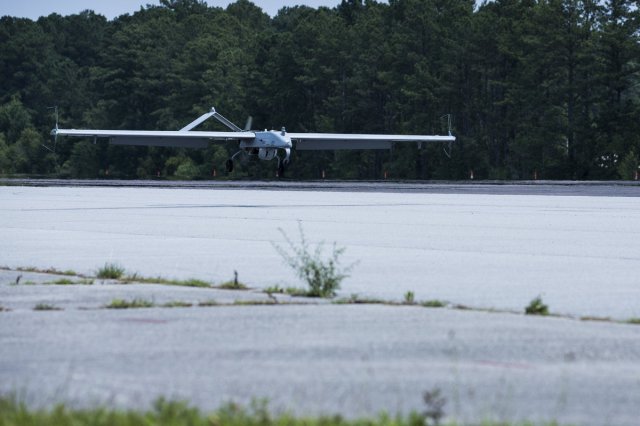NECC wants an unmanned aerial system that can fly out over an airfield after an attack and work with artificial intelligence to help its people find the best way to fix it, Rear Adm. Brian Brakke told a session at the Global Explosive Ordnance Disposal Symposium & Exhibition.
“How can I use UAS to run the initial damage assessment across that airfield?” he asked, outlining his thinking. “Is there artificial intelligence, deep machine learning, that can run across that field, scan it, tell me what [unexploded] munitions I have left, what condition [the airfield] is in, how many craters I have, how can they be filled; then map me out a plan that my teams can look at and say: ‘OK, this is how we’re going to attack this problem and get that runway back up in an expedient fashion’?”
Experts say the technology for Brakke’s notional drone is partly available already — there are drones that can create high-fidelity maps of locations and send them back for analysis. But getting the drone to also come up with a plan of attack for repairing the damaged airfield is tricky.
“We’ve got commercial drones flying right now and taking volume measurements of stock piles,” said Michael Blades, an analyst with consulting and research firm Frost & Sullivan, who studies unmanned systems. “That kind of high-precision mapping and surveying is going on right now. You can get one hell of a three-dimensional map by flying over a few times.”
The issue, Blades said, is the analysis piece — telling the difference between a rock and an unexploded ordnance is still very much reliant on expert human eyes.
“To do that autonomously, to say, ‘The mine is here, here and here,’ that’s the leap,” he said.
Michael Horowitz, an unmanned systems expert at the University of Pennsylvania, agreed that what’s out there now isn’t exactly what Brakke is looking for.
Source: Defense News


Multirotorcraft Ltd may already have the answer by combining RTK, onboard orthomosaic prosssing for volumetric analysis and quantitive repair analysis / planning.
Hazards
AI object recognition system to identify and record potential ordinance hazards (shape, material, IR emesivity etc) and adding this scan layer to the map with accurate coordinates for destruction / removal. All data to be transferred to local mission command system then on to USMil secure servers or both.